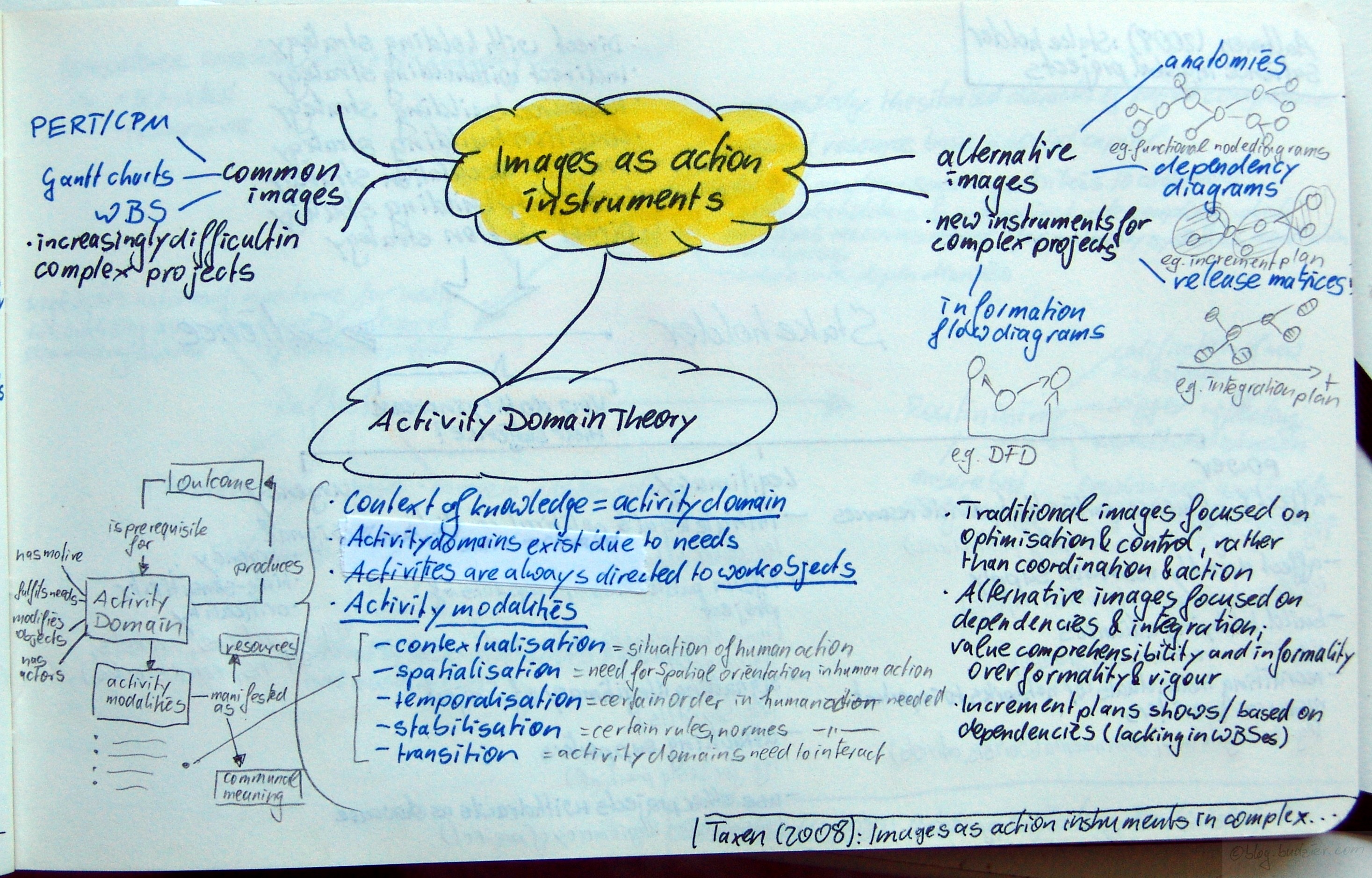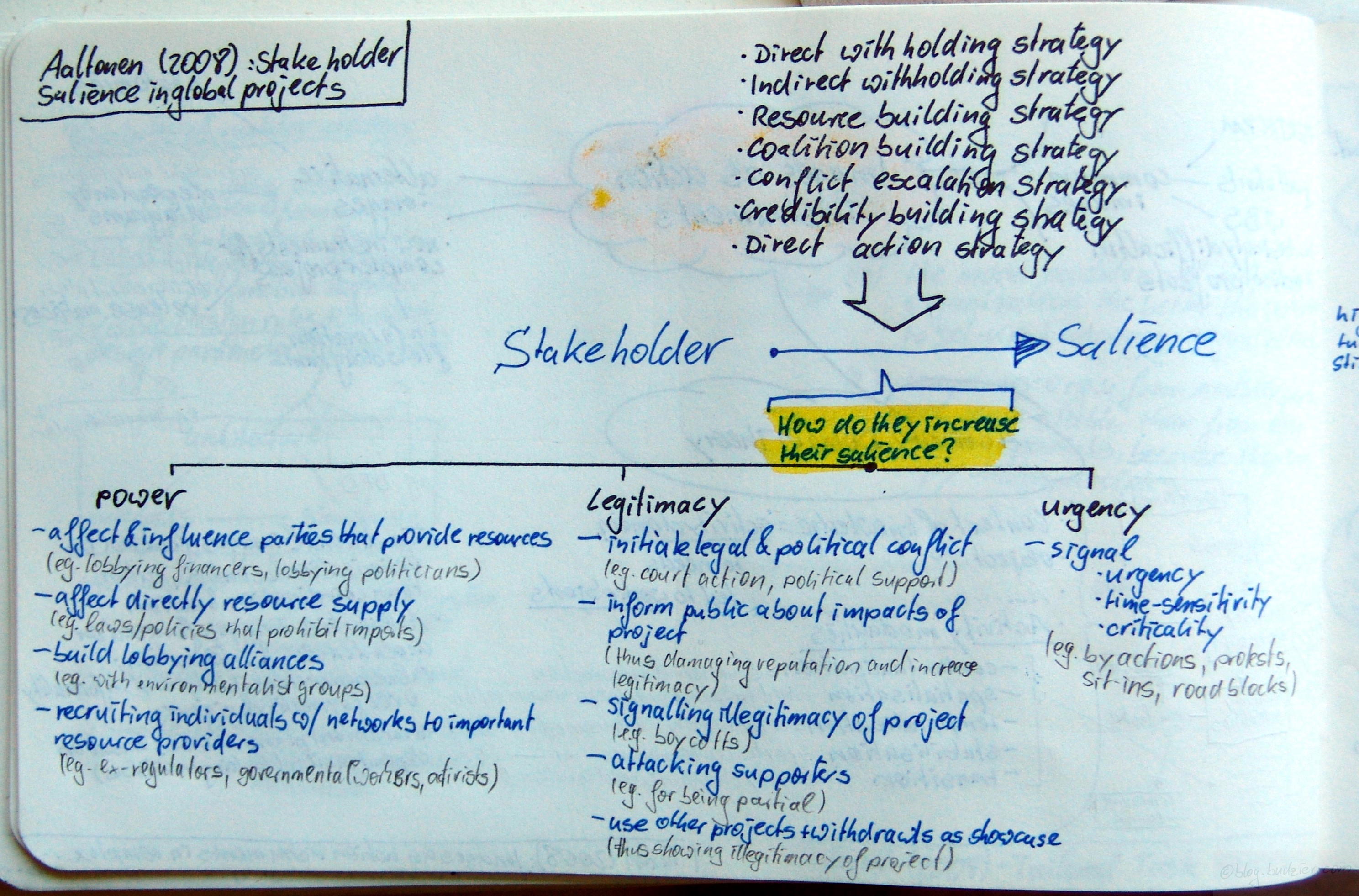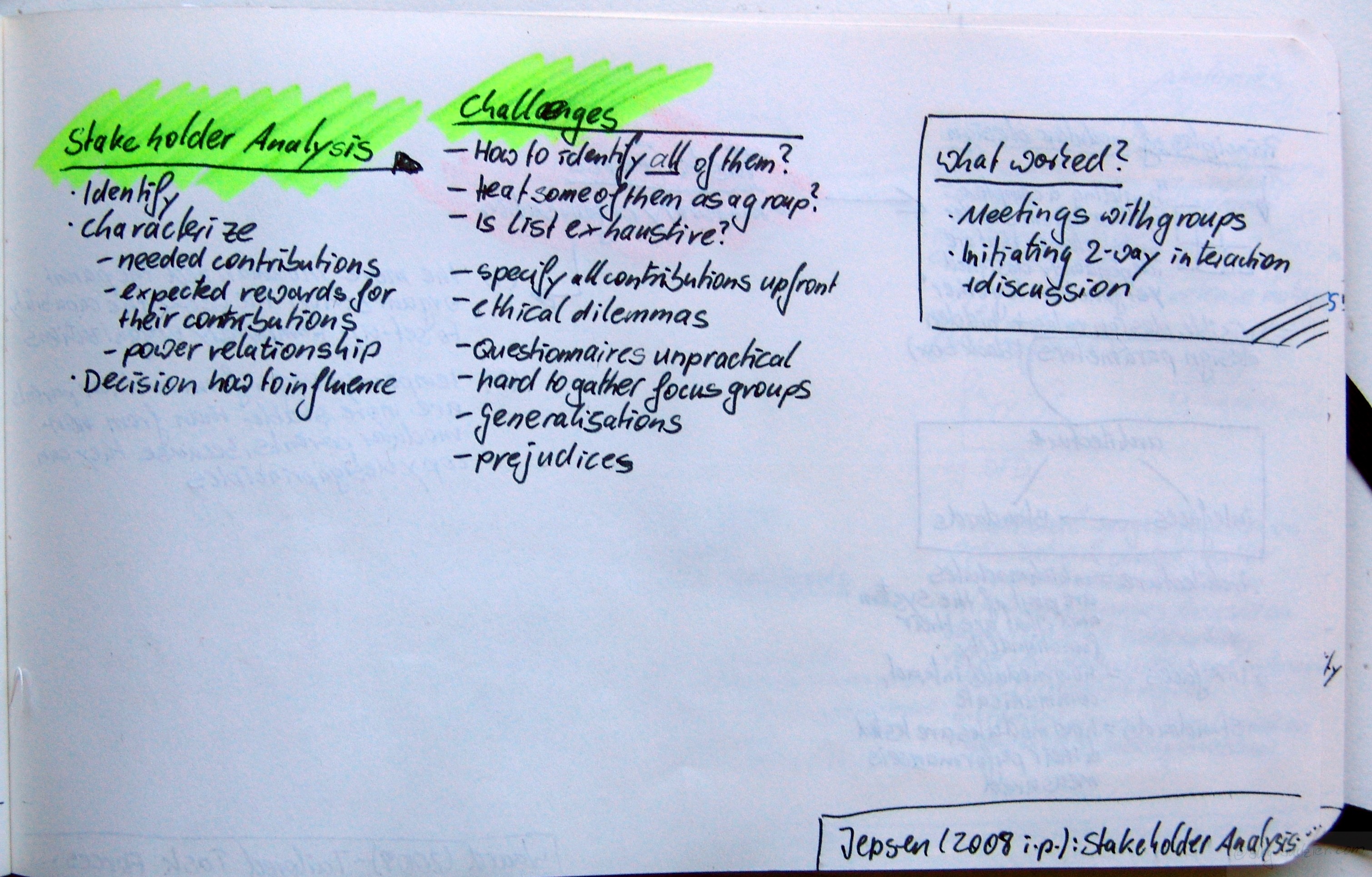Söderlund, Jonas; Vaagaasar, Anne Live; Andersen, Erling S.: Relating, reflecting and routinizing – Developing project competence in cooperation with others; in: International Journal of Project Management, Vol. 26 (2008), No. 5, pp. 517-526.
http://dx.doi.org/10.1016/j.ijproman.2008.06.002
Söderlund et al. explore the question – How do organisations build project management capabilities? They analyse a focal project to show how the specific competence, project management, is build in an ever changing environment. As such comptence creation is situated and recursive.
The authors use a process view to explain the capabilities building. The process is three-fold – (1) Relating, (2) Reflecting, and (3) Routinising.
First step – Relating to expand the resource base, in this step the organisation
- Acknowledges the situated character of project competence
- Expands the resource base, which builds social capital
- Engages in boundary spanning activites to cooperate with stakeholders and act against de-coupling, which decreases the overall resources needed for the authority system as coordination mechanism
- Creates interdependencies
Second step – Reflecting to improve use of resource base, in this step the organisation highlights actions of importance for institutionalising a common frame of reference and stimulating shared reflection in the project. As such it:
- Improves the resource base
- Engages in problem solving
- Shifts from exploitation based to experimentation learning, which re-uses previous processes, and recycles old solutions
- Detects system-wide errors & generates new associations
Third step – Routinising to secure resource base and improve relational activity, in this step the organisation tries to ensure the best use of its resource base. Therefore it
- Codifies new knowledge
- Triggers reflecting
- Exploits what is known
- Emphasises and builds project-level comptence





